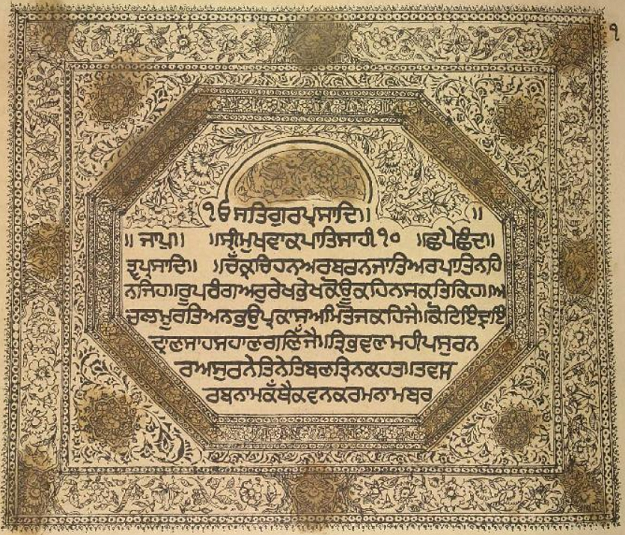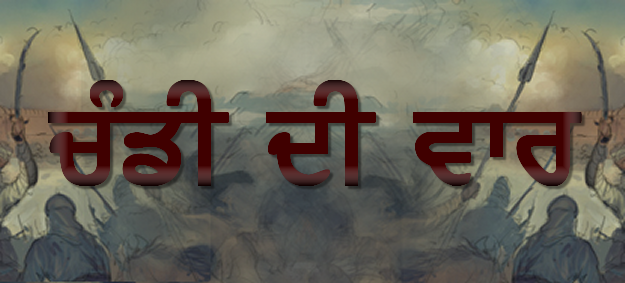
"JapuJi Sahib has in it the inimitable rhythm of life in Nature- it makes man a fountain that flows with the milk of human kindness. JapuJi Sahib is the text of the art of living in unison with Nature and with Nature’s God."
"Nothing in the other scriptures and Bibles of men equals JapuJi Sahib, in its wonder, its depth and its simple clarity of perfect revelation of personal truth."
"…this hymn gives joy; it vitalizes the whole of our spiritual being, and elevates and ennobles."
"The Sikh is one with Nature and it is JapuJi that has brought this about. JapuJi Sahib is a hymn that has in its ring the tremble of the Stars, the flickering lamps of this blue-domed Temple."
"…the true Sikh, a true hero, will not exchange his JapuJi for the wealth of the three worlds, for the comforts of Paradise or the joys of a dream-world of intense pleasure."
"…without JapuJi Sahib one dies, that the personal love for the Guru falls into the dust and diet of daily life and that without JapuJi Sahib one is famished."
The JapuJi of Guru Nanak
By Professor Puran Singh (1881-1931)
The modern age has been auto-suggesting through its false science of political economy that man lives on bread alone. Miserably small and depressing is this animalistic view of life. The greatest thinkers of the world have not put faith in bread alone. Pregnant with spiritual beauty are the memorable words of Jesus Christ,-“Thou shalt not live by bread alone but by every word that proceedeth out of the mouth of God.” All animals get hungry; they must go to the manger, but to glorify this physical necessity, as does the modern world, is the outcome of ignorance and of blindness to spiritual values.
My eyes turn upwards and kiss the lotus feet of the Great Guru who dwells within me when I read the hopeful message,- “Thou shalt not live by bread alone.” My thirst for reality is greatly assuaged. And when I reflect that Sikhs of the olden time, the disciples of the Guru, lived on the hymn of JapuJi Sahib I am filled with joy and thankfulness. So profound has been the influence of the constant repetition of this divine music by my Sikh ancestors, the ancestry that started only 450 years ago, that when I dip myself in cold water, involuntarily escapes the song out of me as birds cry out at break of dawn.
To have dissolved its pure cadences in the blood of the Sikh children is a great artistic work. For this hymn gives joy; it vitalizes the whole of our spiritual being, and elevates and ennobles. Its touch cools down all fires of desire and the peace that was the Buddha, comes to the Sikhs to both men and women as they chant the Guru’s songs. Today if you ask any Sikh child to choose between JapuJi Sahib and bread; he will answer unhesitatingly ‘JapuJi!’ I am glad whenever I find the son of Man rises above physical need. And the true Sikh, a true hero, will not exchange his JapuJi for the wealth of the three worlds, for the comforts of Paradise or the joys of a dreamworld of intense pleasure.
With a broken shoe, a tattered turban, and a threadbare shirt, a poor toiler on the earth without name or caste reads JapuJi as he sits clothed in the color of the false dawn under a tree in the wilderness. His eyes grow red with delight and as he opens them there is the red sun trembling in the east. The Sikh is one with Nature and it is JapuJi that has brought this about. JapuJi Sahib is a hymn that has in its ring the tremble of the stars, the flickering lamps of this blue-domed Temple. They who live on the surface, rebuke that Sikh for wearing a white turban, but as he raises his head, the clouds disperse and reveal the snow covered mountain. I sometimes wonder because the mountain is such a splendid Sikh of the Guru. The Sikh copies his fashions of dress from the beautiful in nature.
Of what use is life, if my head does not rise above all its circumstances and conditions even as the high white mountain rises above the plains? Seeing the river that comes out of the mountains like a song, is it manly for me to have a heart that is not the fountain of all the rivers that flow? JapuJi Sahib has in it the inimitable rhythm of life in Nature- it makes man a fountain that flows with the milk of human kindness. JapuJi Sahib is the text of the art of living in unison with Nature and with Nature’s God. It describes creation, as the divine poet sees it and suggests the realization of cosmic consciousness.
Our reasons are of the material and therefore negligible; but feeling is of the spiritual. Nothing in the other scriptures and Bibles of men equals JapuJi Sahib, in its wonder, its depth and its simple clarity of perfect revelation of personal truth. Those who have the likeness of God in them dwell within the inmost circle of the family that is Nature. Is it not crude to speak of ‘one’s own family’ and not to be of all families? What is that courtyard which has not the moon and the mountains within its small expanse? What is that house which has not the wondrous expanse of the whole universe? It is miserable to be small. I wonder we do not suffocate in mental misery because of this ignorant exclusiveness. But by its rhythm, JapuJi Sahib of Guru Nanak lifts us up to great heights. We clasp the stars in one hand and the roots of life on earth in the other.
It is a charmed hymn. In its repetition is life. It is wonderful that Guru Nanak resumes his personality in this one hymn of His. We meet the master in its sound. They of this earth have not yet heard of it, but the Heavens resound with its lilt.
I think it is of no benefit to translate it. Having translated it once, in another mood I am impelled to translate it again. At least I wish to translate it endlessly. And it is forever impossible to translate it. In its vision, it swings through many universes. In its sound resides the omnipotent being. In its movement there is the thrill of the silver steps of a myriad dancers of the sky. In its repetition is the assonance of a choir of Heaven, and the companionship of the liberated souls. It teaches no philosophy but it imparts the spark of life. In its chant is the secret of the future religion of the whole mankind. And one never has enough of this spiritual chant. JapuJi Sahib will make the little sweet intense language of the Punjab the universal language of man. ‘A fond hope!’ you may say. But love has its ways. And a small track may lead to a new continent I do not know. Love works all miracles. And Guru Nanak’s chosen language may, by the love of His name, be the chosen of the people of this earth. Its cadence is audible in Heaven; this much I know.
To be continued...
From Spirit Born People (first published in 1928)











